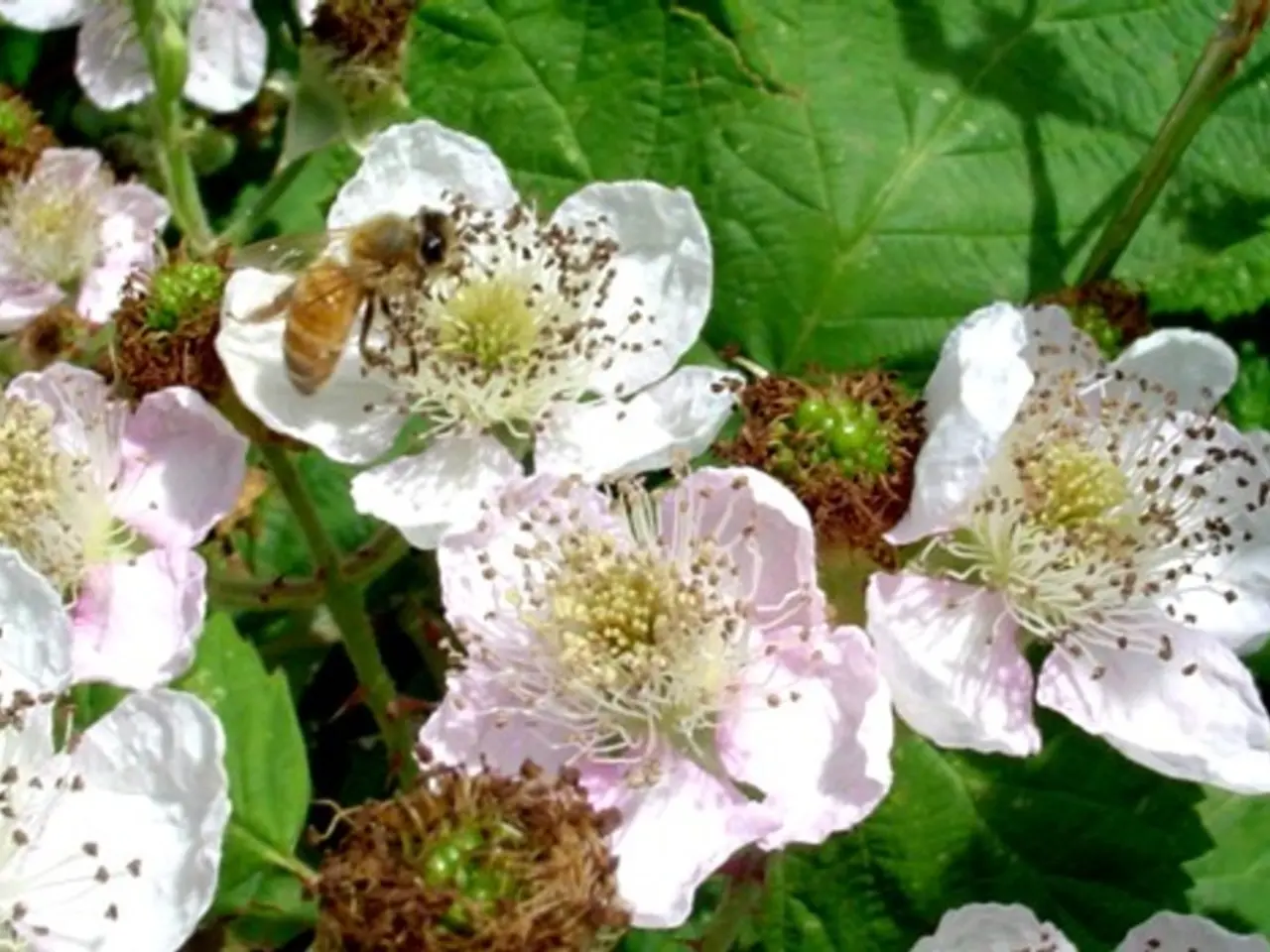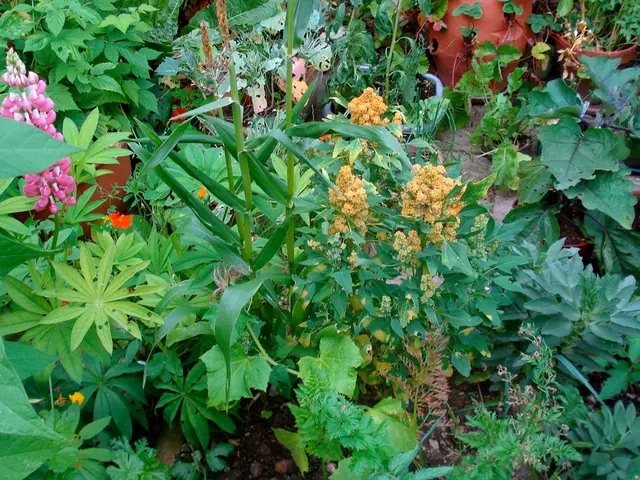Insects on the Rise: Boxelders and Leaf-footed Bugs swarming neighborhoods
As the autumn leaves begin to fall and temperatures drop, two common garden pests, the boxelder bug and the western conifer-seed bug, start their search for warmth and shelter. These larger true bugs, known for their distinctive markings, can become a nuisance as they seek entry into homes and buildings to overwinter.
Boxelder bugs are black with red or orange markings, while the western conifer-seed bug is reddish-brown to black. Both species spend the summer on various conifer and deciduous trees, feeding on sap from seeds, cones, twigs, and needles.
During autumn, boxelder bugs, in particular, become a nuisance as they look for cozy places to overwinter. They are often found gathering on warm surfaces outside in early fall but seek entry points into structures as the weather gets colder. Leaf-footed bugs, though less detailed in the sources, generally behave similarly, seeking warm, protected spots for overwintering.
To prevent these pests from invading homes, several measures can be taken. Sealing entry points such as cracks and gaps around windows, doors, siding, utility pipes, behind chimneys, and underneath the fascia is essential. Repairing screens and weather stripping also helps reduce openings.
Removing nearby host trees, such as boxelder trees and other maples, can also help reduce populations. Physical removal, such as vacuuming or sweeping bugs that gather on exterior walls or indoors, can prevent a bigger problem. Reducing outdoor lighting or switching to yellow bulbs can deter these bugs, as they are attracted to light.
Insecticides should be used as a last resort, with targeted treatments on exterior perimeters and suspected entry points to reduce populations. However, care should be taken to consider the environmental impact of these treatments.
Indoors, these bugs are a nuisance because of their presence, foul odour when crushed or disturbed, and fecal stains on curtains or walls. Eggs of boxelder bugs hatch in 11-19 days, with bright red nymphs appearing about the same time that new tree leaves develop.
The western conifer-seed bug, also known as the western pine-seed bug, belongs to a small group of true bugs called the leaf-footed bugs. It is native to western North America but has rapidly expanded its range, including the northeastern U.S. and Canada.
After undergoing five nymphal instars, adulthood is typically achieved by late August for the western conifer-seed bug. Eggs hatch in approximately 10 days, and the young nymphs then begin to feed. The western conifer-seed bug is harmless to animals and humans.
In conclusion, implementing these preventative measures can help minimize the likelihood of boxelder bugs and leaf-footed bugs invading homes in fall as they seek warmth and shelter for the winter. Understanding their behaviour and taking proactive steps to exclude them from homes can make autumn a more enjoyable season for homeowners.
Boxelder bugs and leaf-footed bugs, which are home-and-garden pests, become a nuisance during autumn as they seek entry into homes to overwinter. To prevent these pests from invading residential spaces, it's important to seal entry points, repair screens and weather stripping, remove nearby host trees, and reduce outdoor lighting.




